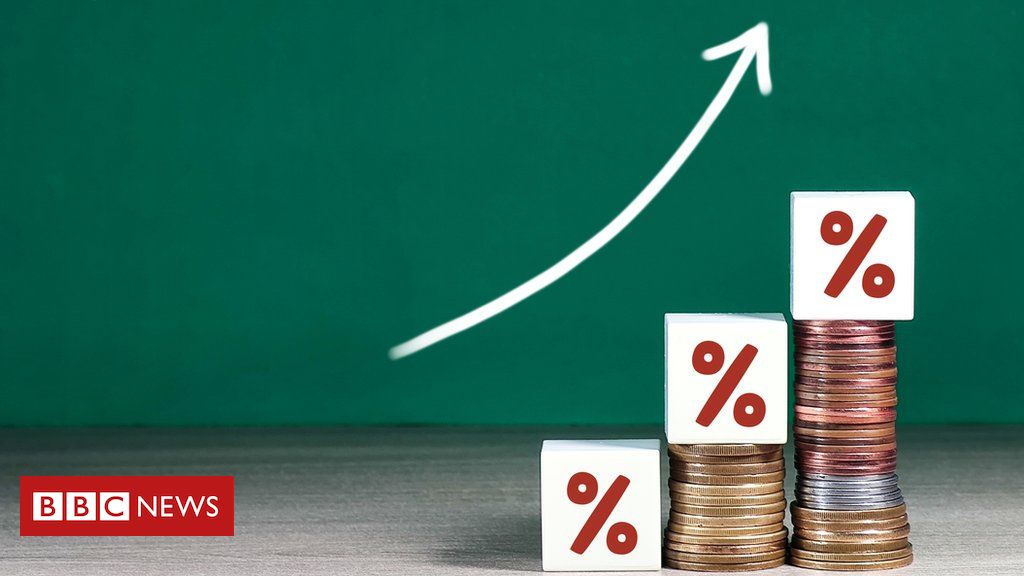What is compound interest, the mathematical “snowball” that the super-rich profit from
4 min read
- author, Dahlia Ventura
- roll, BBC News World
They are behind calculating revolving credit card and loan installments
If you could choose between receiving an instant cash payment of $1 million or a “magic” cent that doubles every day for 30 days, which alternative would you choose?
Since you have read the question in the context of this article, you may suspect that the answer is not very clear.
If that offer came out of nowhere, the lure of a million dollars could be much greater than a penny, no matter how charming. After all, even if it doubles the next day, we’re only talking about two cents.
But if the calculation is done for a total of 30 days from the original assumption… that’s amazing: by then you’ll have over $5 million USD.
A character that would leave anyone awestruck – and possibly suspicious. So, if you’re anything like me (if you’re not, feel free to skip the next few lines), grab a pencil, paper, and calculator and let’s go:
1 x 2 = 2 x 2 = 4 x 2 = 8 x 2 = 16 x 2 = 32 x 2 = 64 x 2 = 128 x 2 = 256 x 2 = 512 x 2 = 1,024 cents…and there are 10 days .
1,024 x 2 = 2,048 x 2 = 4,096 x 2 = 8,192 x 2 = 16,384 x 2 = 32,768 x 2 = 65,536 x 2 = 131,072
131,072 x 2 = 262,144 x 2 = 524,288 x 2 = 1,048,576 cents.
1,048,576 x 2 = 2,097,152 x 2 = 4,194,304 x 2 = 8,338,608 x 2 = 16,777,7216
16,777,7216 x 2 = 33,554,432 x 2 = 67,108,864 x 2 = 134,217,728
134,217,728 x 2 = 268,435,456 x 2 = 536,870,912
So 536870912 cents, or $5,368,709.12 in 30 days!
The formula for calculating compound interest uses the initial amount, the interest rate, and the rate period
No wonder this concept is often described as a snowball rolling down a hill, increasing in size and accelerating with time.
A description that echoes the title of the authoritative biography of famous investor Warren Buffett, snowball. In an interview on Bloomberg’s The David Rubenstein Show, the billionaire said, “My life has been a product of compound interest.”
And he’s just one of the super rich people who’ve profited hugely throughout the history of the concept.
Heaven and Hell
The good news is that, as you saw in the cent doubling example, to understand this you don’t need to know more than elementary arithmetic – even if successive doubling is tedious to prove.
However, the calculation itself is not difficult: the formula uses the initial amount, the interest rate and the period of occurrence of the rate as parameters.
According to the Investopedia website, compound interest is interest that increases exponentially over time, not linearly.
It can be difficult to understand what exponential or compound growth means – but realizing what it means can help some increase equity and prevent others from suffering losses.
This is precisely why the “miracle” of capitalization is a double-edged sword. See this example:
If you invest or borrow an amount of money at a compound interest rate of 10% per annum, after 5 years you keep the money invested or do not pay off the debt, you will multiply your wealth or debt by 1.6 times.
Given the same parameters, with a tenfold increase in the time period, the final value will not be multiplied by 16, but by 117.
Billionaire Warren Buffett has described compound interest as one of the rules that built his fortune
clarification
The concept of compound interest is simple: the total interest calculated for a certain period of occurrence (one month, one year, depending on whether the interest rate is monthly or annually, for example) is added to the principal amount, and in the following period, interest is calculated on that amount in full, etc.
So, for example, if you invest $100 at an interest rate of 5% per annum, at the end of the first year you will have $105. So far, the account has used only small interest.
The difference will be noticeable in the second year, as with compound interest, you’ll earn interest not only on the $100 principal, but also on the $5 interest from the previous period.
So, instead of the $5 return as in the first year, which would make the total investment $110, the second year return would be $5.25, for a total of $110.25.
One of the keys to this concept, of course, is time, not only because the more patient a person is, the more money they will make, but because moments make all the difference.
It sounds a little poetic, but this idea serves, for example, to illustrate the importance of starting to save early.
Take the case of pensions. If you start saving at age 25 and retire at age 65, every $100 saved by age 25 will be worth more than $700 by age 65 (assuming a 5% annual interest rate).
For those who started saving at age 45 and retired at age 65, on the other hand, every $100 saved at age 45 will be worth $265 at age 65—not bad, but a huge difference.
Thus, as the American polymath Benjamin Franklin said (whose face appears on the $100 bills): “Money makes money. And money that makes money makes money.”
But don’t forget: That same compound interest also doubles the amount you owe on credit cards or loans… eventually.

“Devoted food specialist. General alcohol fanatic. Amateur explorer. Infuriatingly humble social media scholar. Analyst.”




